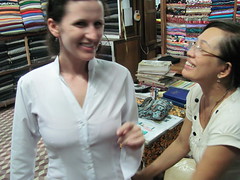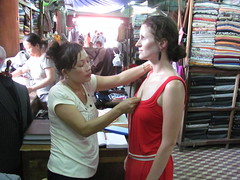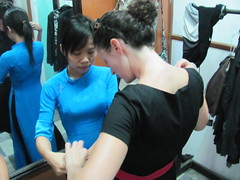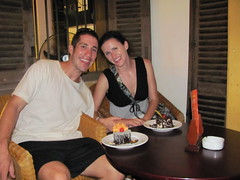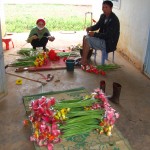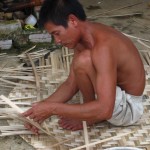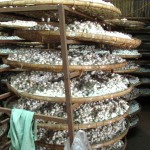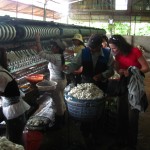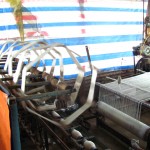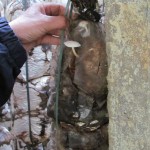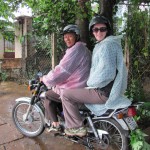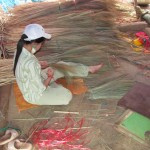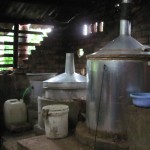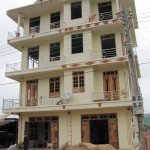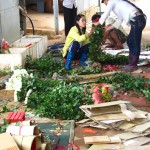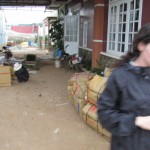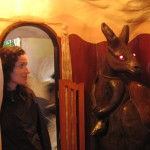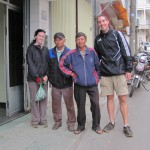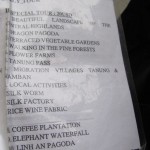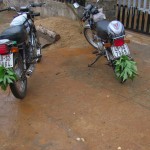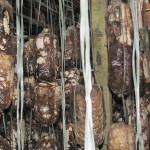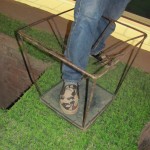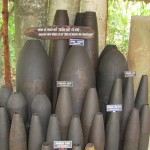
Lunch of noodles and tofu
Maybe we haven’t mentioned it yet, and sometimes we forget, but we are on a bit of a budget. Something a few people have asked, and I’m sure many more have wondered, is: “How can you afford it?” Since neither of us is independently wealthy (well – I know I’m not, and if Michael is he’s not letting on). So the answer is that we saved nearly everything we could for over two years. We were blessed to have low- and no-cost housing for much of this time, and avoided major purchases. We both picked up side jobs when we could manage them – Michael coaching soccer and me consulting. Without the major expenses that we’ve been fortunate to avoid, we saved enough to get us here and hopefully back.
In truth, the cost of traveling here is comparable to our cost of living at home. (The difference is that neither of us is getting paid right now.) Although travel costs are sometimes steep, like for flights, it’s shockingly cheap to survive here. We spent about $2.50 on dinner last night, delicious bowls of Vietnamese pho {a noodle soup with little bits of beef, added herbs, and sometimes bean sprouts (don’t worry, dietitian friends, they boil them here to kill off the bacteria)}.

Mmm... pho bo
Recently, in Hue, we splurged. We’d heard about a place where you could get a traditional Vietnamese meal for much more than we usually spend. But it was a 7-course set menu, recommended by our guidebook, which is sometimes a turn-off in itself. We figured we’d check it out. The atmosphere was glorious, the wait staff attentive, and the food creatively presented. For us it was such a switch: we’re usually sitting in kiddie-sized chairs on the sidewalk over a bowl of soup or noodles or spring rolls, which is super. That’s how they do it here. But this place peeled a tomato in the shape of a rose… And it’s kitschy, yes, but the pineapple cut and decorated to look like peacock was just too fun to not appreciate.

Pineapple-Peacock-Springroll-Delight
Any of the set menus would’ve been way too much food, so we selected the smallest one and split it. What an adventure to follow, when our first course of spring rolls was delivered!
Secondly, we had vegetable soup, which was tasty although much like the stuff I make back home. Then we had steamed shrimp, tucked into a wine glass with various unknown garnishes, served with a side of salt/freshly cracked pepper. The kicker here was the red chilies cut to look like tiny fish. Who thinks of this stuff?
Next up was the Hue special pancake, a pastry of sorts stuffed with shrimp, pork, and spices. Following this was more pork and shrimp… but this time it was spooned onto a rice cake. This was when I started to get full and Michael had to pick up my slack, which he did with no trouble.
The star of the show was the grilled beef. Served with lotus-steamed rice, the beef was amazing and as tired as I am of rice, this was delicious.
Finally, dessert. Now, desserts here aren’t exactly like those back home. We’ve had more than one composed of foods you wouldn’t really think of as sweet – like avocado or lima beans. But there was enough sugar in the “green bean formed fruit” to make them strangely enjoyable, if nothing else because they were presented so interestingly.
Is it a tourist trap? Probably. I’m not sure how traditional these foods really were. They definitely didn’t resemble the street foods we typically enjoy. But thankfully there were no tour buses pulling up outside while we were there. This restaurant received very mixed reviews online, but I’m quite happy to say we left entertained, stuffed, and having enjoyed a seven-course meal for a meager (by American standards… ) $12.
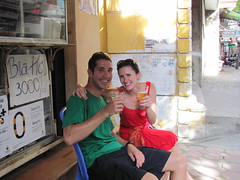
Bia Hoi for about $0.18 per glass... Now that fits our budget!

